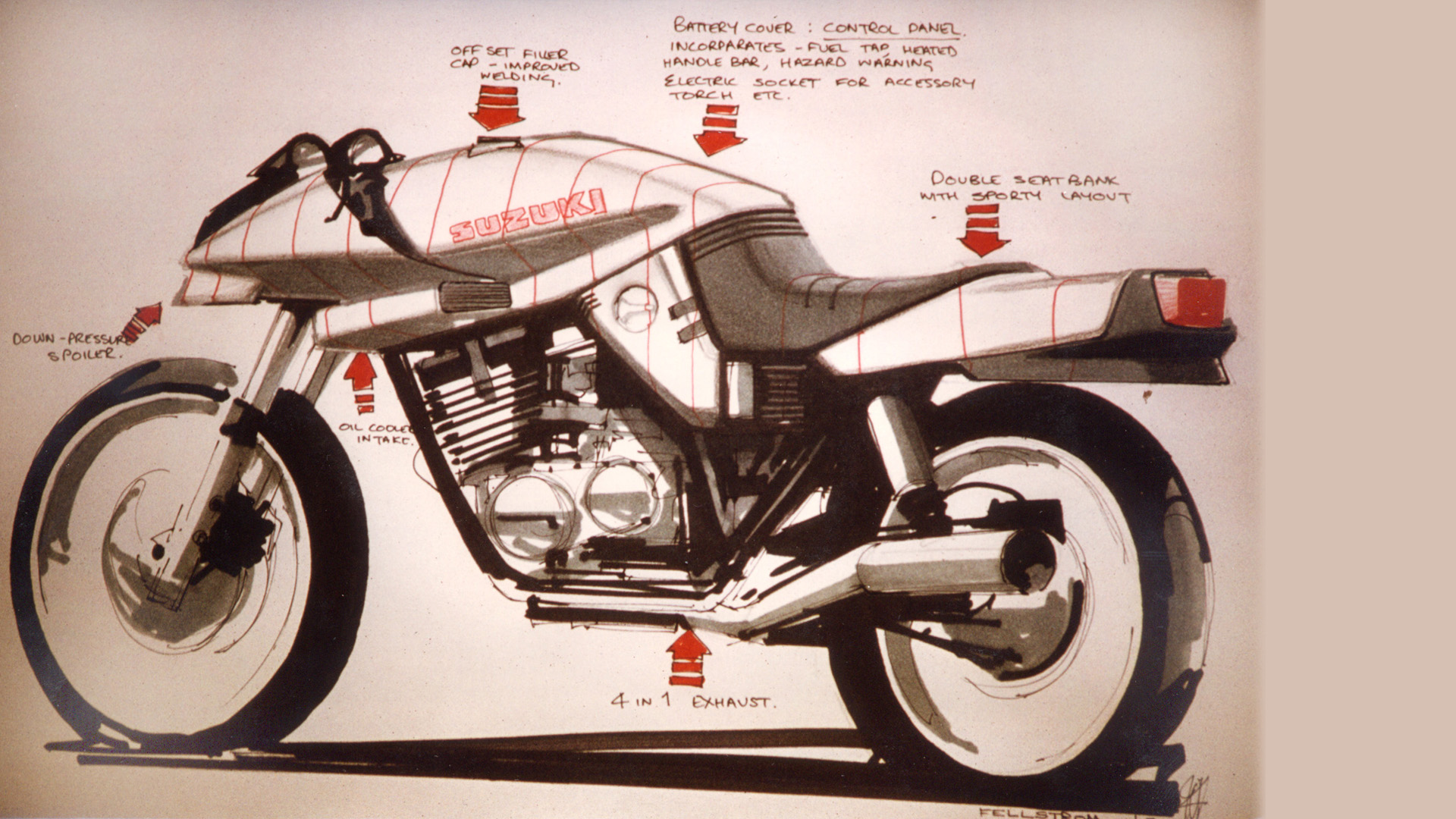

Suzuki’s claimed consumption of 53.3mpg will get you more than 135 miles, but in the real world, I ended up filling the Katana up far too often for my liking. But there’s barely enough petrol to hit 100 miles if you use all that lovely GSX-R1000 engine’s performance. Sitting on the bike, the ‘tank’ cover under your chin looks big enough for a Dakar-replica capacity.

You can fit just 12 litres of unleaded into the big silver Suzuki, and considering the size of the thing, it’s amazing how they’ve managed it.

There is one big ‘but’ when you speak about the Katana though, and it’s the shockingly small fuel tank. The upright riding position makes it a bit of a wheelie machine too (if that floats your boat), the Dunlop tyres were great on the warm, dry late-summer tarmac we mostly rode on, and the Brembo front brakes are more than up to the job.
#Suzuki katana 1980 crack#
The engine is a peach once you crack on, and it really reveals its superbike roots once you pass 8k on the rev counter. The Katana isn’t super light – 215kg is a hefty kerb weight for a naked machine these days – but you don’t notice it on the move. Riding on some twisty back roads for pics, it’s nimble enough and the slightly staid suspension package does a good job. Over the next few weeks, I get on great with the Katana. On the other hand, the windblast once you get into triple figures is significant, so you’re not likely to stray too far over the limit without realising it, as you can do on a faired superbike. The lack of cruise control stands out a bit on a brand-new 2020 bike, and you’re on your own through the average speed camera zones. The test bike has the small optional windscreen so there’s a bit of wind protection, and the riding position is relaxed and comfy enough. On the motorway back to London from Suzuki’s Milton Keynes HQ, the Katana works well for an essentially-naked machine. It’s not got the silly peak power output of something like the Yamaha MT-10, and is certainly down on the bigger 1100cc lumps of the Ducati V4 Streetfighter or Aprilia Tuono 1100 – but all those bikes are much pricier beasties, aimed at a different sector. The GSX-R1000-derived engine is genuinely good – a strong, lusty lump with grunty, old-school power delivery and a lovely roar. I’ve spent a fair bit of time on the GSX-S, and had a long-term test bike for a season a few years back, so there’s plenty that’s familiar about the Katana. Why not also check out our own interpretation of the Suzuki Katana Concept bike in partnership with Kardesign back in 2016 and see how close we came. The engine, chassis and electronics are all straight from the GSX-S, with only the neu-Kat bodywork and tweaked riding position as the main differences. This modern take, parked up in front of me outside Suzuki HQ, is also based on an existing bike, this time the GSX-S1000 super naked. The original Kat was based on the Suzuki GSX1100 superbike, with a set of slick bodywork penned by a design house in Germany, Target Design. The similarities are more than skin-deep too. A fairly faithful remake of the original GSX1100 Katana from the 1980s, it’s aimed firmly at the nostalgia sector of the market – the guys and gals who lusted after the big air-cooled dinosaur from 1981.
#Suzuki katana 1980 plus#
The obvious candidates are the Triumph modern classics – the Bonneville and Scrambler model ranges, plus the Royal Enfield 650 twins, BMW’s RnineT, Ducati’s Scrambler, Kawasaki’s Z900RS and Yamaha’s XSR900.Īnd this, the Suzuki Katana. People love the look and feel of a bike from the 1970s or 80s, but with the performance, reliability and capability of a modern machine.

You’d need to have spent the past decade or so in a coma to have missed the popularity of modern retro bikes. The Suzuki Katana: Retro, Iconic and Adrenaline Tonic


 0 kommentar(er)
0 kommentar(er)
